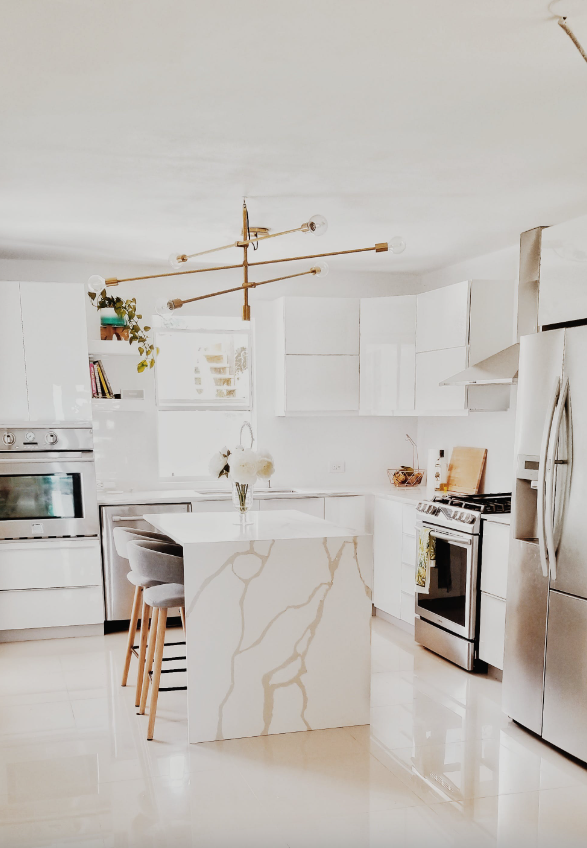Table of Contents
Make sure your home renovation has a great return on investment. Here is how you can achieve that!

Home remodeling is an adventure filled with excitement and potential. Whether you’re building a cozy corner, revamping a living space, or upgrading your bathroom, each change you make brings you closer to your dream home. But beyond the aesthetics and comfort, there’s a critical aspect to consider: the return on investment (ROI). Ensuring a good ROI means your home improvements suit your immediate needs while also adding value to your property. This is especially true in vibrant markets like Austin, Texas, where real estate trends and values can significantly influence remodeling decisions.
1. Prioritize High Value Projects
Identifying and prioritizing high-value projects is critical in maximizing your home’s ROI. For example, kitchen remodels and bathroom upgrades are known to provide substantial returns. In contrast, personalized projects, like adding a wine cellar, may not appeal to a greater demographic and might not significantly increase your home’s resale value.
In the kitchen, minor remodels can be particularly effective. Replacing old appliances with energy-efficient models, repainting cabinets, and updating fixtures can transform the space without a hefty investment. Similarly, in the bathroom, shower replacement and updating tiles and fixtures can make a significant impact, especially in cities like Austin, where modern and efficient home features are highly valued. For those residing in Austin, understanding the Austin shower replacement cost can be a key aspect in planning your budget and ensuring a worthwhile investment. These improvements not only enhance the functionality and aesthetic of these spaces but also appeal to potential buyers should you decide to sell your home in the future.
2. DIY vs. Professional Remodeling
Knowing when to DIY and when to hire professionals can save you both time and money. Simple projects like painting walls, changing light fixtures, or basic landscaping can be great DIY tasks. They can save you money and add a personal touch to your home.
However, for more complex projects like electrical work, plumbing, or structural changes, it’s often best to hire professionals. They have the expertise and tools to do the job safely and efficiently. While hiring professionals might seem expensive upfront, their work can prevent costly mistakes and add more value to your home in the long run.

2. Budget Wisely for Your Remodel
A wise and practical budget is the backbone of any successful home remodeling project. It’s essential to establish a realistic budget that aligns with your goals and the market standards. An effective budgeting strategy involves thorough research and a clear understanding of your financial limits. It’s crucial to account for unexpected costs, which can arise due to structural issues or changes in project scope. Allocating a contingency fund of about 10-20% of your total budget can provide a safety net for these unforeseen expenses.
Moreover, prioritize spending on aspects that offer the best ROI. While it might be tempting to splurge on luxury items, focusing on key areas like the kitchen, bathroom, and energy-efficient upgrades can offer more significant returns. It’s also worth considering financing options, if necessary, to ensure your budget aligns with your remodeling vision.
3. Choose the Right Materials
Selecting the right materials is a critical step in home remodeling. The materials you choose should be a balance of quality, cost, and aesthetics. For example, opting for granite countertops in the kitchen can offer durability and style, but if they’re too pricey, consider alternatives like quartz or solid surface materials that still provide a great look and feel at a more affordable price.
In flooring, hardwood is a popular choice for its timeless appeal and durability, but if it stretches your budget, laminate or vinyl flooring can offer a similar look at a fraction of the cost. The key is to choose materials that will stand the test of time, both in terms of style and functionality, without blowing your budget.
4. Improve Energy Efficiency
Improving energy efficiency in a home is another great way to ensure high ROIs with your home remodel, offering both immediate and long-term benefits. By integrating energy-efficient features such as LED lighting, high-efficiency appliances, and enhanced insulation, homeowners can significantly reduce their utility bills. This not only results in immediate cost savings but also adds considerable appeal to the home, particularly for environmentally conscious buyers. Moreover, these upgrades contribute to a more sustainable living environment, reducing the home’s carbon footprint. Investing in energy efficiency during a remodel is not just an economically sound decision; it also reflects a commitment to environmental sustainability, which is increasingly valued in today’s real estate market.

5. Prioritize Curb Appeal
The exterior of your home forms the first impression for potential buyers, setting the tone for their entire perception of the property. Simple yet effective enhancements like well-maintained landscaping, a fresh coat of paint, or a new, inviting front door can dramatically transform the appearance of your home. These improvements are not only aesthetically pleasing but also signal to buyers that the property is well cared for. Investing in the curb appeal of your home can significantly boost its attractiveness and perceived value, making it stand out in the competitive real estate market.
6. Keep up With Trends but Remain Timeless
Your home should reflect your style while also keeping up with current trends. However, it’s important to strike a balance between trendy and timeless. For instance, neutral colors for walls and floors can provide a timeless backdrop, while trendy accessories like throw pillows or contemporary art can add a modern touch.
In kitchen and bathroom remodels, go for classic designs in fixtures and finishes. Trends come and go, but classic styles are evergreen. By keeping the larger elements of your home more traditional, you can easily and inexpensively update the look with accessories as trends change.
3. Make Sure You Have the Right Permits
Getting the right permits for your remodeling project is crucial. Not having the necessary permits can lead to legal issues and even impact your home’s resale value. Before starting your project, check with your local building authority to understand what permits you need.
Permits ensure that your project complies with building codes and safety standards. While obtaining permits can sometimes be a lengthy process, it’s an important step to ensure that your remodel is done legally and correctly.
Wrapping Up
Remodeling your home is a big undertaking, but with careful planning and consideration, it can be a rewarding investment. By understanding the cost and ROI of specific upgrades, budgeting wisely, and choosing the right projects and materials, you can ensure your remodel enhances both your home’s value and your quality of life.
Remember to balance DIY and professional work, keep up with trends while maintaining timeless elements, and never underestimate the importance of legal considerations. With these tips in mind, you’re well on your way to a successful home remodel that not only meets your current needs but also contributes positively to your home’s long-term value.
